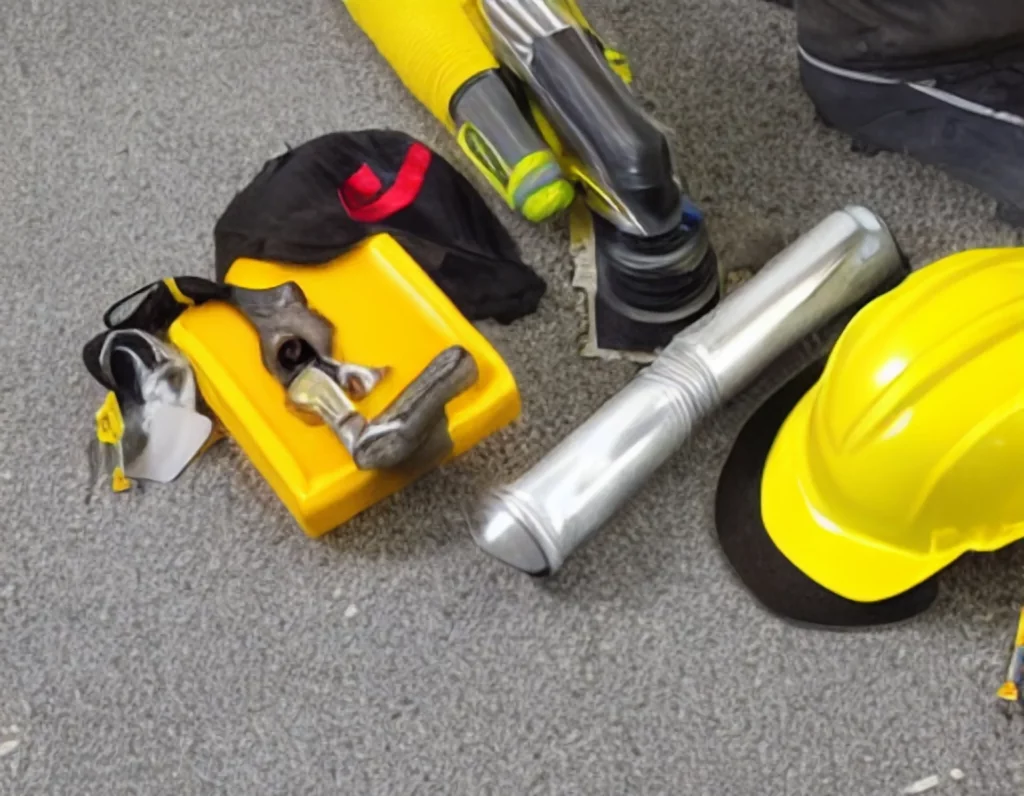Introduction
Water leaks inside walls can cause significant damage if left undetected and untreated. Not only can they lead to structural problems, but they can also result in mold growth and pose health risks. Therefore, it is crucial to promptly identify and resolve any water leaks within your walls. This article will guide you through the process of finding a water leak inside a wall, helping you understand the signs, locate the source, and take the necessary steps to fix the issue. By following these steps and implementing preventive measures, you can safeguard your home from the damaging effects of water leaks.
1. Why it is important to find water leaks inside walls
Water leaks may seem like a minor inconvenience, but when they penetrate the sanctity of your walls, things can quickly turn into a homeowner’s worst nightmare. Not only can these hidden leaks lead to structural damage and costly repairs, but they can also create the perfect breeding ground for mold and mildew, leaving your home smelling like a forgotten gym locker. So, it’s crucial to detect and address water leaks inside walls before they wreak havoc on your house and your sanity.
2. Signs of a water leak inside a wall
Dampness or water stains
If you notice damp spots or water stains on your walls or ceiling, it’s a clear indication that a water leak has infiltrated your fortress of dryness. These splotches of moisture can range from subtle discoloration to more ominous-looking stains, resembling abstract art gone wrong.
Musty or moldy odor
If you catch a whiff of that distinct, musty scent reminiscent of wet socks left in a gym bag, there’s a good chance you’re dealing with a water leak hiding behind your walls. Mold and mildew thrive in moist environments, and their presence can turn your cozy abode into a breeding ground for funky odors.
Peeling or bubbling paint
As the water from a hidden leak seeps through your walls, it can wreak havoc on your paint job. So, if you stumble upon walls resembling a molting snake shedding its skin, you can bet there’s water lurking beneath the surface, causing the paint to peel and bubble with frustration.
3. Locating the source of the leak
Understanding plumbing systems
Before embarking on your leak-finding adventure, it’s helpful to familiarize yourself with the inner workings of your home’s plumbing system. Knowing the general path of pipes and their proximity to the affected area can narrow down your search and prevent unnecessary exploratory surgery on your walls.
Following water stains or dampness
The evidence of a water leak is often left behind in the form of stains or dampness. By carefully tracking these telltale signs, you can follow the water’s trail and narrow down the potential source of the leak. Think of it as playing detective, solving the mystery of the damp walls.
Using a moisture meter
For those who prefer a more high-tech approach to leak detection, a moisture meter can be your trusty sidekick. This handy tool measures the moisture content in various materials, allowing you to pinpoint areas of elevated moisture levels and identify the source of the sneaky leak.
4. Preparing for the investigation
Gathering necessary tools and equipment
Before diving headfirst into a battle with a hidden water leak, make sure you’re armed with the right tools. Grab a flashlight, a moisture meter, a screwdriver, and perhaps some clean towels or buckets to catch any water that decides to make an appearance during your investigation.
Ensuring safety precautions
While sleuthing for water leaks may sound like an intriguing adventure, safety should always take center stage. Make sure to turn off the electricity in the affected area to avoid any shocking surprises. Additionally, equip yourself with gloves and eye protection to keep yourself safe from any unexpected encounters with mold, dust, or debris.
Now that you’re equipped with the knowledge and tools necessary to conquer the elusive water leak, go forth and save your walls from the clutches of unwanted moisture! Happy hunting, intrepid homeowner!

5. Tools and Equipment Needed
Flashlight
To navigate through the dark recesses of your walls, a trusty flashlight is essential. Opt for one with a bright beam and a compact size, making it easy to maneuver in tight spaces.
Moisture Meter
A moisture meter is your secret weapon for locating hidden water leaks. This handy device measures the moisture content in various materials, helping you pinpoint the source of the problem without tearing down walls.
Wall Scanner or Stud Finder
To avoid accidentally damaging any structural elements while investigating a water leak, grab a wall scanner or stud finder. These devices can detect pipes, wires, and studs behind the wall, ensuring you know exactly where to look.
6. Step-by-Step Process for Finding the Water Leak
Shutting off the Water Supply
Before embarking on your leak-finding mission, it’s crucial to turn off the water supply. This prevents any further damage and makes it easier to identify the source of the leak.
Inspecting Visible Pipes and Fittings
Start your investigation by inspecting the visible pipes and fittings in the area surrounding the leak. Look for signs of corrosion, dripping, or pooling water. These visible clues can often lead you to the culprit.
Performing a Gentle Tap Test
Give the walls around the suspected leak area a gentle tap. A hollow or damp sound can indicate the presence of water accumulation or damage.
Using the Moisture Meter
Take your trusty moisture meter and scan the walls, starting from the bottom and moving upward. Pay close attention to any areas that show an abnormal increase in moisture levels compared to surrounding areas. This can help narrow down the location of the leak.
Using a Wall Scanner or Stud Finder
If the source of the water leak remains elusive, employ a wall scanner or stud finder to identify hidden pipes. By locating these plumbing lines, you increase the chances of finding the leak without resorting to unnecessary demolition.
7. Fixing the Water Leak
Taking Appropriate Actions Based on the Source of the Leak
Once you’ve located the water leak, it’s time to take appropriate action. Depending on the severity and cause of the leak, you may need to involve a professional plumber or undertake the necessary repairs yourself.
Repairing or Replacing Pipes or Fittings
If the leak stems from a damaged or faulty pipe or fitting, it’s crucial to repair or replace it promptly. This may involve soldering, sealing, or reinstalling new plumbing components. Seek guidance from a professional if you’re unsure of the best approach.
Re-Sealing or Patching Damaged Areas
In cases where the leak has caused visible damage to the wall, it’s important to re-seal or patch the affected areas. Use appropriate materials, such as joint compound or drywall tape, to restore the wall’s integrity and prevent future water penetration.
8. Prevention Tips for Future Water Leaks Inside Walls
Regularly Inspecting Plumbing Systems
To catch potential leaks before they become major issues, make it a habit to inspect your plumbing system regularly. Look for signs of wear and tear, loose connections, or any unusual changes in water pressure or temperature.
Maintaining Proper Humidity Levels
Excessive humidity can lead to condensation and, eventually, water damage. Ensure your home is properly ventilated and use dehumidifiers in areas prone to excess moisture, such as bathrooms and basements.
Addressing Minor Issues Promptly
Don’t ignore small leaks or drips, as they can escalate into larger and more expensive problems. Take immediate action to fix any minor issues you encounter to prevent them from causing more significant damage down the line.
Remember, tackling a water leak inside a wall requires patience, keen observation skills, and the right tools. With these steps and prevention tips, you’ll be better equipped to handle any leaky situation that arises, all while keeping your walls dry and your sense of humor intact.
In conclusion, detecting and addressing water leaks inside walls is essential for maintaining the integrity of your home and preventing costly repairs. By being vigilant about signs of leaks, properly investigating and locating the source, and taking prompt action to fix the issue, you can mitigate potential damage and ensure the safety of your living environment. Remember to also follow preventive measures to minimize the risk of future water leaks. By following these guidelines, you can be proactive in preserving the condition of your walls and protecting your home from the detrimental effects of water damage.

